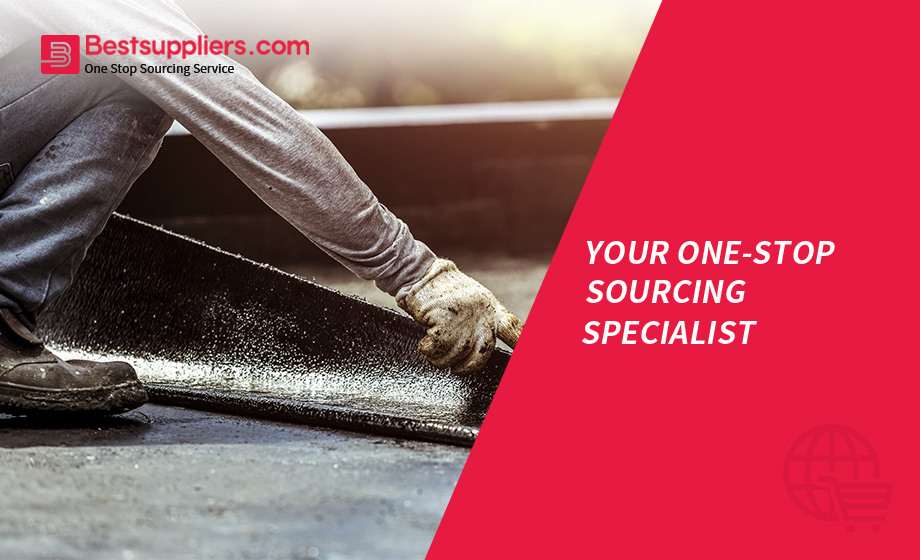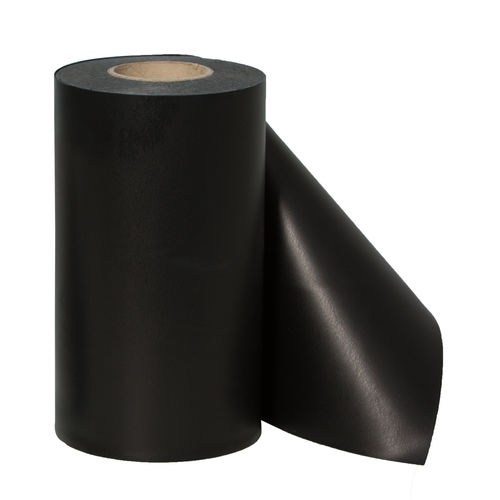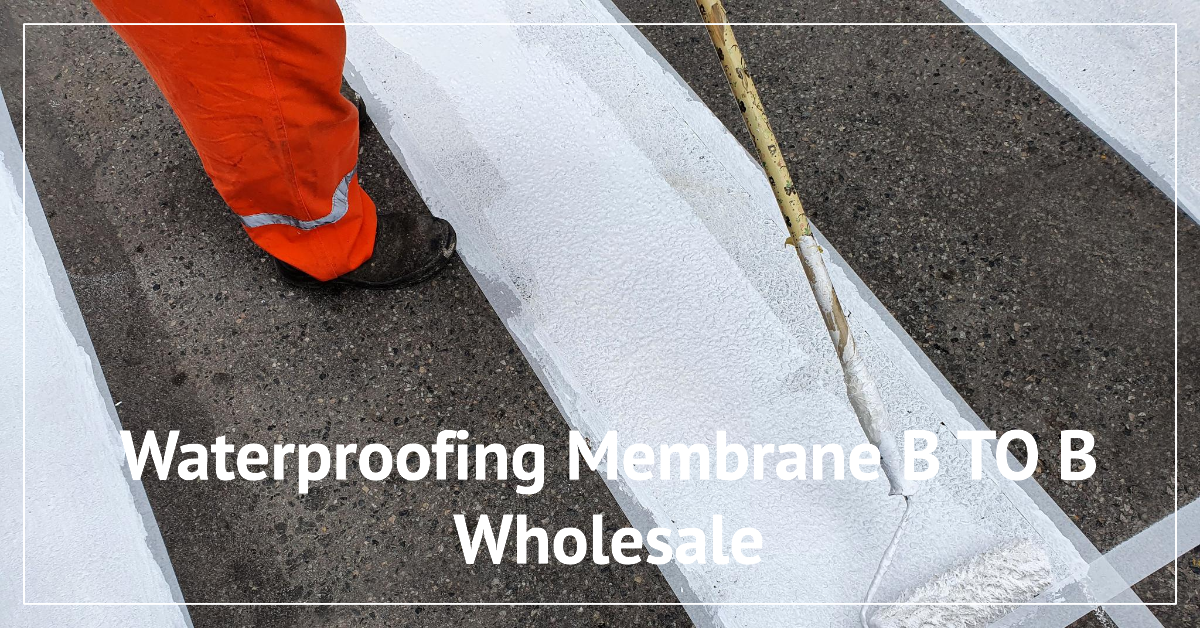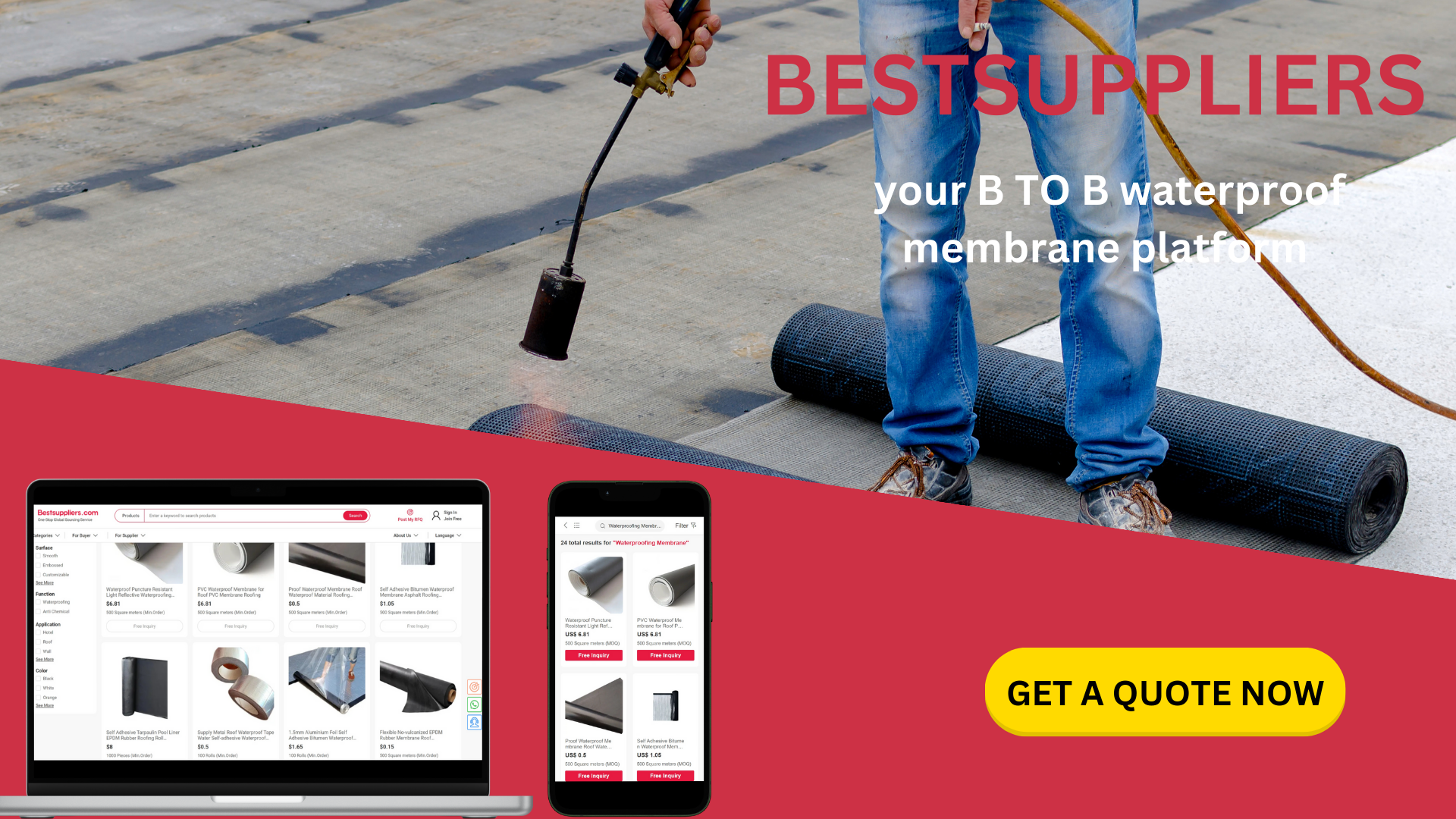What is Waterproofing Membrane?

What Are the Waterproofing Materials?

The waterproofing membrane is a new kind of polymer waterproof material. From the production process, the technical requirements of waterproofing membrane are much higher than the general waterproof material. On the quality of it at the same time, the waterproof breathable membrane compared to other waterproof materials has a better performance at the same time of strengthening the building's air tightness, and water tightness. Its unique structure design through steam performance, can make the structure of the internal water vapor flowing rapidly, protect the palisade structure thermal performance, so as to really achieve the purpose of reducing building energy consumption, and avoid breeding mold structure. Without any doubt, the waterproofing membrane is a new kind of energy-saving material that is healthy and environmental protection.
How to Use Waterproofing Membrane?
In the construction process, you should avoid accidentally penetrating and opening the waterproof breathable film and try to ensure the integrity of waterproofing membrane. If openings or penetrations must be made, they should be sealed with butyl tape.
As there is no obvious flame retardant effect of a waterproof breathable membrane, you should avoid using the welding curtain wall engineering fittings, and start a fire assignment (including welding) process before waterproof breathable membrane construction. Be careful, it is strictly prohibited to use fire near the waterproof breathable membrane.
According to the actual situation, choose the laying way of waterproofing membrane. You can fix the tanking membrane with nails. The fixed place shall be sealed with butyl tape, and the sealing area shall be fully covered by butyl tape.

Clean dust and oil before construction to make that the corner code is clean, so as to ensure the bonding effect between the corner code and the waterproof breathable film. When the corner code passes through the waterproofing membrane sheet, the integrity of waterproof film should be kept as far as possible. The waterproofing membrane curve will be flooded and completely sealed between the corner code and the the body of waterproofing membrane.
When connecting with window and door frame, the waterproofing membrane linear should adopt flooding seal. For the corner, it should be sealed by film curve. The bonding width of sealing window and door frame is not less than 2cm, and corner bonding width is not less than 10cm.
In the construction of roof, the laying of waterproof film should be along the water flowing direction on the roof, and the lap waterproof film length of is 10cm. When the high-strength aluminum alloy bracket of the roof passes through the waterproofing membrane, the intersection of the aluminum alloy bracket and waterproofing membrane should be sealed with butyl rubber strip around a circle.
Advantages of Waterproofing Membrane
1.High temperature resistance: working temperature can arrive to 250℃.
2.Low temperature resistance: the waterproofing membrane has good mechanical toughness on the Bestsuppliers platform. Even when the temperature drops to -196℃, the elongation of 5% can be maintained.
3. Corrosion resistance: it shows strong resistance to cid and alkali, water and a variety of organic solvents.
4. High lubrication: it has the lowest friction coefficient in solid materials.
5. Non-adhesion: it is a solid material in the minimum surface tension, does not adhere to any material. For more details, please contact our waterproofing membrane suppliers here.
What is Waterproofing Membrane Used For?
Waterproofing membranes are essential components in construction and building maintenance, offering a protective layer to shield structures from water damage. These membranes are typically applied to surfaces that are susceptible to water exposure, such as roofs, basements, walls, and foundations, to prevent water ingress that can lead to costly repairs and structural failures.
The primary function of a waterproofing membrane is to create a watertight barrier over surfaces. This barrier not only prevents water from seeping into buildings but also protects against dampness and the growth of mold and mildew, which can compromise indoor air quality and building materials. By doing so, waterproofing membranes extend the life of a structure and enhance its durability against environmental challenges.
Additionally, waterproofing membranes are utilized in various applications beyond typical residential and commercial buildings. For instance, they are critical in protecting infrastructure such as bridges, tunnels, and parking structures which are often exposed to harsh environmental conditions. These membranes also play a vital role in water conservation projects, such as artificial ponds and reservoirs, ensuring that precious water resources are retained efficiently and sustainably.
The versatility and protective qualities of waterproofing membranes make them indispensable in construction, contributing significantly to the longevity and safety of structures while ensuring a healthier living and working environment.

What is Waterproofing Membrane Made Of?
Waterproofing membranes are crucial in construction for preventing water damage, made from diverse materials tailored to specific environmental conditions and building needs.
One prevalent material is modified bitumen, valued for its durability and flexibility, making it ideal for high-stress areas like roofs. It excels in resisting extreme temperatures and wear, serving well in both residential and commercial settings.
Ethylene propylene diene monomer (EPDM) rubber is another popular choice. This synthetic rubber stands out for its longevity and versatility, resistant to weather changes, UV rays, and severe weather, making it perfect for exposed structures such as rooftops and outdoor decks.
Polyvinyl chloride (PVC) is favored for industrial uses due to its chemical resistance, light weight, and ease of installation. It's also non-flammable and inhibits biological growth, enhancing its durability.
Thermoplastic polyolefin (TPO) and liquid-applied membranes are emerging as eco-friendly options. TPO is noted for its energy efficiency and heat-reflective properties, while liquid membranes provide a seamless, adaptable barrier that fits complex architectural designs perfectly.
These materials ensure that waterproofing membranes effectively protect buildings from water ingress, maintaining structural integrity and longevity.
What are the Disadvantages of Waterproofing Membrane?
While waterproofing membranes provide significant benefits in protecting structures from water damage, there are several disadvantages associated with their use that need to be considered during the planning and installation stages.
Cost and Installation Complexity: One of the primary drawbacks of waterproofing membranes is their cost. High-quality membranes can be expensive, and the cost increases with the complexity of the installation. Professional installation is often required to ensure that the membrane performs effectively, which adds to the overall expense. The installation process itself can be time-consuming and requires precise workmanship to avoid failures, such as leaks and breaks in the membrane.
Maintenance and Repair Challenges: Over time, waterproofing membranes may degrade due to environmental factors like UV exposure, extreme temperatures, or mechanical damage. Once damaged, these membranes can be challenging and costly to repair. The entire section of the membrane often needs to be replaced to ensure integrity, which can disrupt the use of the building and result in significant maintenance costs.
Compatibility Issues: Not all waterproofing membranes are compatible with all surface materials. Chemical incompatibility between the membrane and the substrate can lead to adhesive failures or degradation of the membrane. It is crucial to select the right type of membrane for the specific materials used in the construction to avoid such issues.
Environmental Concerns: Some types of waterproofing membranes are made from materials that are not environmentally friendly. For example, PVC and other synthetic materials can release harmful chemicals and are not biodegradable. The production and disposal of these materials can have a negative impact on the environment, which is an important consideration for sustainable building practices.
These disadvantages highlight the importance of careful consideration and planning when choosing and implementing waterproofing solutions. It is essential to weigh these drawbacks against the benefits to make an informed decision that ensures long-term protection and value.

How Long Does Membrane Waterproofing Last?
The lifespan of membrane waterproofing is a critical consideration for construction and maintenance planning, as it directly influences long-term building integrity and cost-efficiency. Typically, the durability of a waterproofing membrane depends on several factors, including material quality, installation expertise, environmental conditions, and maintenance practices.
Material Quality: Waterproofing membranes made from high-quality materials like EPDM rubber, PVC, TPO, and modified bitumen are known for their robustness and durability. For instance, EPDM membranes are expected to last between 25 to 30 years due to their resistance to UV rays, temperature fluctuations, and other environmental stresses. PVC and TPO membranes also offer similar longevity, especially when properly installed and maintained.
Installation Quality: Proper installation is crucial in maximizing the lifespan of waterproofing membranes. Faulty installation can lead to early failure and reduced effectiveness. It's essential to hire experienced professionals who can ensure that the membrane is applied correctly and securely to avoid issues such as water pooling and membrane detachment.
Environmental Factors: The environment plays a significant role in the longevity of waterproofing membranes. Exposure to severe weather conditions, frequent temperature changes, and high UV radiation can accelerate aging and degradation of the material, necessitating more frequent replacement.
Maintenance: Regular maintenance can significantly extend the life of a waterproofing membrane. This includes routine inspections to identify and repair minor damages before they escalate, ensuring that the membrane continues to perform its protective function effectively.
On average, with optimal conditions of material quality, professional installation, and diligent maintenance, a waterproofing membrane can protect a structure from water ingress for 20 to 30 years, providing substantial long-term benefits in terms of structural safety and cost savings.
In Conclusion
waterproofing membranes are crucial for protecting structures from water damage by creating a watertight barrier against moisture. Made from diverse materials like modified bitumen, EPDM rubber, PVC, and TPO, these membranes are selected for their durability and environmental resilience. They provide extensive benefits including resistance to UV rays and temperature fluctuations. However, considerations such as the complexity of installation, maintenance needs, and environmental impact are important for ensuring long-term effectiveness.
For industry professionals seeking high-quality waterproofing solutions, BestSuppliers.com offers an exceptional B2B trading platform. It connects global importers with a diverse array of waterproofing membranes, sourced directly from experienced manufacturers. This platform is distinguished by its extensive variety, direct access to manufacturers, and competitive pricing, all without minimum order quantity limitations. BestSuppliers.com facilitates cost-effective procurement of reliable waterproofing materials, making it an invaluable resource for enhancing building projects and infrastructure maintenance efficiently.
variety, direct access to manufacturers, and competitive pricing, all without minimum order quantity limitations. BestSuppliers.com facilitates cost-effective procurement of reliable waterproofing materials, making it an invaluable resource for enhancing building projects and infrastructure maintenance efficiently.

